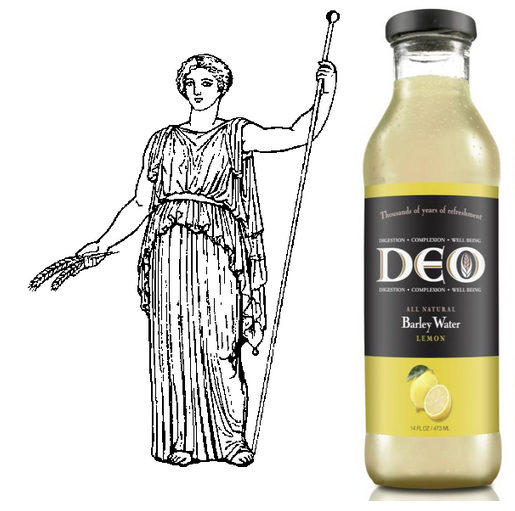The Other Players, the Barrier to Breakout
To give you an understanding of how just deep in left field some of these products really stand, consider that aside from maple water, cactus water might be the most vanilla of the bunch.
The cactus water category is represented by Caliwater and True Nopal Cactus Water, the latter of which has an ingredient list and packaging design that doesn’t seem too far off from coconut water: no sugars added, non-GMO, and claims that the product can reduce inflammation. The comparisons are made in relation to coconut water, as well: that it has about half the calories and half the sugar of the leading brand of coconut water.
McKee said that Caliwater, made with prickly pear cactus extract and juice and packed with naturally-occurring electrolytes minerals and betalains (anti-inflammatory antioxidants), can aid in skin revitalization and bodily detoxification. He also said that the betalains can add a glow to skin and reduce under-eye puffiness — a familiar reaction of this oft-overworked and under-rested nation.
“It’s like a long-held, best-kept secret,” McKee said.
Birch tree water brands such as Love Birch and Byarozavik Birch Tree Water boast sources of potassium, electrolytes and antioxidants, among other ingredients.

Howard Ketelson, the founder of Arty Water and a PhD with Alcon Laboratories, a global leader in eye care, touts Arty Water’s dose of potassium, vitamin C, the phytonutrient lutein/zeaxanthin (which can help prevent cataracts and age-related vision deterioration), and beta-carotene. Arty Water’s website also mentions liver health, digestive issues, hangover relief, bone health, metabolic function and brain function.
But those are plenty of claims for a company with limited distribution and the need to persuade an undeveloped consumer base. Arty Water’s challenges — the need for scientific credibility and a growing foundation of loyalists — are the same hurdles that exist for most of the offbeat water brands. They’re marketing functionality and flavor in new formats that haven’t yet gained the trust of the market.
You could understand hesitance from a retailer or distributor. But there are other problems:
At such an early stage for maple water, Farrell is concerned with companies who buy maple syrup, add water and sell it as maple water. This process is much cheaper and easier than bottling sap, he said, but it makes a completely different product in regards to flavor and functionality. As consumers undergo the educational process of maple water, product-to-product inconsistencies could have detrimental effects.
“There’s going to be confusion and it’s going to distort the market,” Farrell said.
Most of these brands have a long way to go before denting mainstream shelves, however, with coconut water teaching consumers that water isn’t just the clear stuff from springs and taps, the offbeat water brands are closer to their goals.
“It has made life much easier for us,” Cugnasca said. “They did the groundwork for many of these beverage products.”
Coconut water is still widespread and growing. In June 2013, Mintel, a global supplier of consumer, product and media data, said that new coconut water products have grown by about 540 percent since 2008. On Feb. 24, Fair Trade USA added coconuts to its growing list of ingredients that can receive Fair Trade certification.
However, when looking at more recent numbers, it seems that coconut water’s growth has decelerated. According to SPINS, a provider of syndicated market research, coconut water growth has declined to 18.5 percent in the natural, specialty and multi-outlet channels in the previous 52 weeks ending on Feb. 23. In the 52 weeks before that period of time, coconut water’s growth in those channels was at 53.9 percent.
Could that slowing of growth leave room for those plucky entrepreneurs and their offbeat water brands? Naturally, they think so. Harris considers coconut water’s recent surge as the precursor to maple water’s future.
“I think maple sap can mimic that rise,” he said.
If these brands ever mimic that rise, though, they’ll likely do so without mimicking coconut water itself. They’ll embrace their own product, without tugging on any coattails.